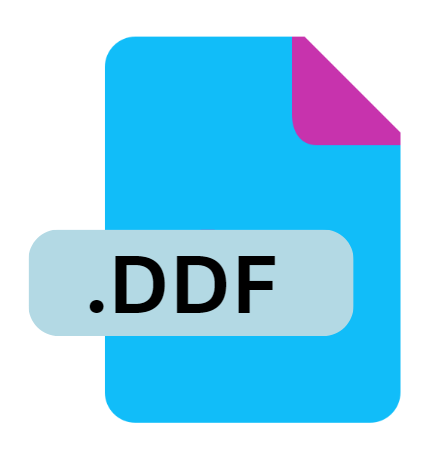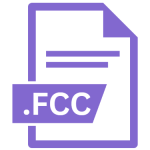.DDF File Extension

Diamond Directive File
| Developer | Microsoft |
| Popularity | |
| Category | Settings Files |
| Format | .DDF |
| Cross Platform | Update Soon |
What is an DDF file?
The .DDF file extension stands for Diamond Directive File. It is used primarily within the Diamond software environment, which is a data management and analysis tool utilized in various scientific and industrial applications.
Diamond software, developed by the software company Diamond Systems, specializes in processing and managing complex data sets, often involving high-resolution measurements and advanced analytical techniques.
More Information.
The Diamond software suite was first developed in the early 2000s as a specialized tool for data analysis and management.
Its initial purpose was to address the needs of scientific researchers and industrial professionals who required robust tools for handling large and complex data sets.
The .DDF file extension was introduced as part of this suite to streamline the process of defining and managing data directives.
Historically, the Diamond software and its associated .DDF files have been used in fields such as environmental monitoring, materials science, and engineering.
The files serve as a means to encapsulate various commands and settings that guide the software in processing data, making them an integral part of the data management workflow.
Origin Of This File.
The .DDF file extension was introduced as part of the Diamond software suite to facilitate the storage and management of directives and commands used within the software environment.
These directives are crucial for guiding the software on how to handle data inputs, outputs, and processing instructions.
The format was designed to be a comprehensive solution for managing complex data workflows and ensuring consistency across various operations within the Diamond software suite.
File Structure Technical Specification.
The .DDF file is a text-based file that contains a series of directives and commands used by the Diamond software.
The file structure is designed to be both human-readable and machine-readable, facilitating easy editing and understanding of the commands contained within.
Technical Specifications:
- Format: Text-based, typically encoded in UTF-8.
- Content: Contains directives and commands in a structured format, often following a predefined syntax specific to Diamond software.
- Sections: May include various sections such as data input specifications, processing commands, output settings, and other configuration parameters.
- Comments: Allows for comments and annotations to be included, aiding in documentation and understanding of the directives.
The technical specification of the .DDF file is tailored to ensure compatibility with the Diamond software environment while allowing flexibility for customization and extension based on user needs.
How to Convert the File?
Converting .DDF files to other formats is not a straightforward process, as the file’s contents are tightly coupled with the Diamond software environment. There are a few approaches to consider:
- Export Functionality: Some versions of the Diamond software may offer an export functionality that allows .DDF files to be converted into other formats, such as CSV or XML, depending on the specific data and directives contained within the file.
- Custom Scripts: Users with programming knowledge may create custom scripts or tools to parse .DDF files and convert them into alternative formats. This approach requires a deep understanding of the file’s structure and the desired output format.
- Manual Conversion: For simple cases, users may manually extract relevant information from .DDF files and input it into other formats. This approach can be time-consuming and may not be practical for large or complex files.
Advantages And Disadvantages.
Advantages:
- Streamlined Data Management: .DDF files simplify the management of data directives, making it easier to handle complex workflows and configurations.
- Human-Readable Format: Being text-based, .DDF files can be edited and reviewed using standard text editors, allowing for easy modifications and debugging.
- Integration with Diamond Software: Directly integrates with the Diamond software suite, ensuring seamless operation and consistency in data processing.
Disadvantages:
- Limited Portability: .DDF files are specific to the Diamond software environment, which may limit their use outside of this context.
- Complex Syntax: The syntax and structure of .DDF files can be complex, potentially requiring specialized knowledge to fully understand and utilize.
- Dependency on Software: Changes or updates in the Diamond software could impact the functionality or compatibility of .DDF files, requiring adjustments or reconfiguration.
How to Open DDF?
Open In Windows
- Diamond Software: The primary method for opening .DDF files on Windows is through the Diamond software suite. Ensure that the software is properly installed and configured to handle .DDF files.
- Text Editors: For viewing and editing the raw content of .DDF files, standard text editors such as Notepad++ or Sublime Text can be used. However, this approach is limited to reviewing and modifying the file’s content without executing directives.
Open In Linux
- Diamond Software: Linux users may need to rely on compatibility layers or virtual machines to run Diamond software if it is not natively supported.
- Text Editors: Linux systems can use text editors like Gedit or Vim to open and edit .DDF files. This approach allows for manual modifications but does not enable the execution of directives.
Open In MAC
- Diamond Software: If Diamond software is available for macOS, it can be used to open and manage .DDF files similarly to Windows.
- Text Editors: macOS users can employ text editors like TextEdit or BBEdit to view and edit .DDF files. As with Windows, this is suitable for modifying the file content without executing it.












